1. Recognize your equipment
Before we perform the activities of spotting well, we really know the equipment we use. Each camera is different from one another, especially now so many brands and models of cameras available on the market. Starting from a digital pocket camera like the Canon Powershot series or the Nikon Coolpix series, then the camera like the Konica Minolta Dimage series which can be classified as a camera "SLR like", to the camera for serious users like DSLR or SLR, for example the Nikon D60, Canon EOS 40D and there are many more.
Each has features and characteristics are very different from each other. Simple things like start-up time you should know. Do not let the moment be photographing planes in flight is missed simply because the moment you turn on the camera too late. Similarly, the ability of the camera 'catch' the color, it should be noted. There are several types of cameras that can display more colors with a lighter without going through the editing process, there are also cameras that tend to be more soft color.
Also, know type of lens you use, how far your lens can capture images without impressed by 'force'. This is mainly for users and SLRs like pocket cameras, where the zoom available in camera is a generally Digital zoom the narrow view of point of view by doing cropping the object down to area centered with same aspect ratio. This is done electronically without making adjustments to the optics of the camera. Digital zoom generally resulted in a decrease photo quality, especially if too 'forced'.
This is different if we use the lenses that are qualified for spotting, such as 70-300 mm lens.
2. The timing spotting
Election time spotting should be sought as possible. Spotting in the morning will get very different results with spotting in the afternoon or evening. In the morning density or the air density is still very high, so the object can be more perfectly captured in our camera. While in the daytime, the air density is very low, and if we choose to photograph in daylight spotting possible noise (unwanted Fluctuation of pixel values in an image) Contained in our pictures will be greater. As for shooting in the afternoon can still be obtained image with noise is quite low and resemble spotting in the morning.
Sample photos of spotting in the morning.
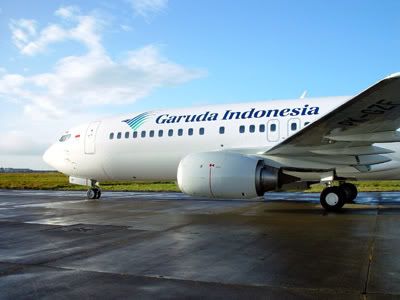
Photo spotting at noon
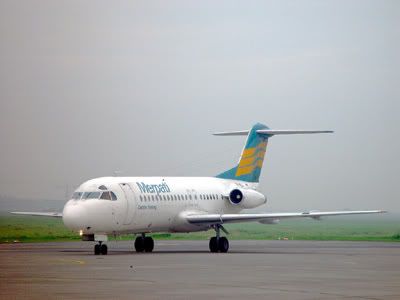
Photos in the afternoon
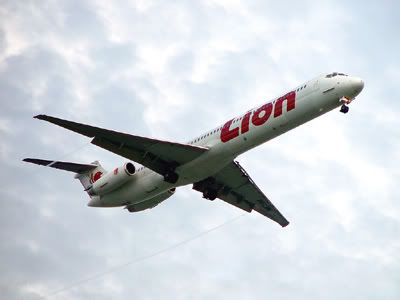
3. Horizontal Level
In general, a lot of mistakes made is the horizon that is not level or tilted. This is very disturbing the images and create photo less comfortable viewing. As much as possible hold the camera with a position parallel to horizon. Do not hold the camera by your side or tilt the body because it has the potential to make your camera is not parallel to horizon.
Examples of photos that are not parallel to the horizon
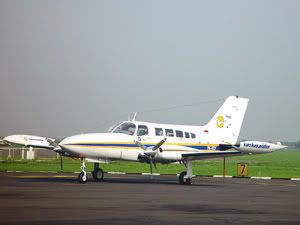 | 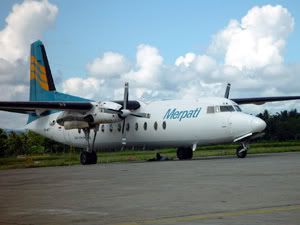 |
4. Eliminate clutter and specify foreground object
Sometimes, like it or not we can not eliminate some objects that appear in our pictures, such as the airport fence, apron lighting, ground service vehicles and others. But as much as possible find a good position to take pictures and look for the right moment so that the existence of these things in the minimization, except if we really want to include additional objects into the object of our photos
The presence of light rail or airport apron in front of the object would be very disturbing and it reduces the beauty and aesthetics of our photos. Besides it can make us no clear picture of his object.
Examples
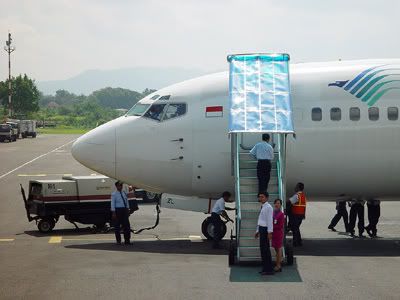
Photos become less beautiful as it is covered with the airplane stairs. In addition, the object image becomes unclear, whether taking the stairs or taking a plane flight.
5. Use the correct shooting technique
Although today almost all photography work can be done via the image editor like Adobe Photoshop, but still the breath of photography is photographing the correct technique. Image editor is just a tool to enhance our image, but to be able to get good photographs must be started from the correct photograph technique.
In doing spotting planes, as already mentioned above should be held with the position of the camera parallel to horizon. Hold the camera with a powerful that will not shift when pressing the shutter release, hold your breath when pressing the button and press the shutter button slowly and gently and not dihentak. If we press the shutter release button with a stomping motion, we can be sure the camera will shake and cause the objects to be blurry or not level.
In addition, because most objects that we take is the moving object (except when the aircraft was parked), then the use of photo techniques must be true. We can use 2 ways in photographing moving objects, namely by following the object and then shoot it, or 'wait' in one place and when the object is entered into our new frame snap. For the first technique that we can do panning (Photographing fast moving objects) to give the impression of moving objects in high speed.
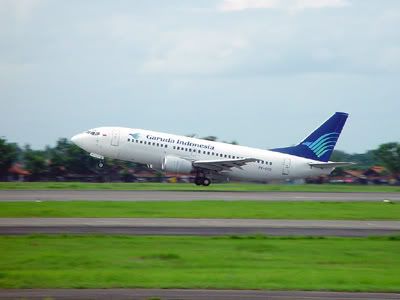
In photographing an object placed in the center of the frame. This is slightly different from the usual technique where we can photograph the location of the object creation in the frame. It is also related to "recognize your camera", where if you are late then the object is already moving.
Sample images where the object is not the center
So a little guidance in conducting plane spotting, may be useful for colleagues who are just getting started spotting. And the most important thing in doing spotting is not to violate the area that is forbidden to enter, obey ethics and discipline, do not bring a tripod or monopod and follow if indeed we are asked to leave by security guards.

No comments:
Post a Comment